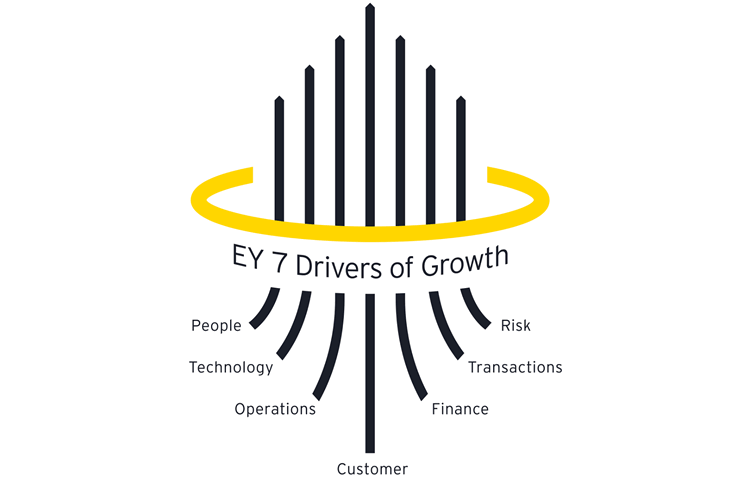Organizations are looking at different ways to get back in business growth mode or speed up their growth strategies after a few tough years. The question: what are the success factors and challenges to do so?
An event, “Wired for Growth,” aims to provide the answers. Here is a look at the event and the matter of defining and delivering business growth strategies in times of digital transformation and accelerating digitalization.
Understanding the drivers of being wired for growth is crucial: deep insights combined with driving the right innovation and experimentation at all levels of the organization (Wired for Growth)
On October 14, Duval Union Academy hosts “The 5th conference on Wired for Growth“, an event for and with executives. The conference takes place in Mechelen (Belgium) and, among others, looks at how to realize business growth through digital transformation, innovation, experimentation, and a customer-centric growth strategy across various functions and business goals.

Business growth ranks high on the agenda of companies, large and small. But where do you start, especially in these quite challenging times where several organizations often still figure out the impact of multiple changes accelerated by the COVID-19 pandemic?
We previously tackled several of these changes. Evolutions regarding the future of work, such as hybrid working models. Or the impact of the fact that people – often for the first time – adopted digital tools/channels for reasons they never used them before. And the changing attitudes and priorities of people; your workers, your customers.
Against this backdrop, one inevitably encounters new business growth challenges and opportunities. And, of course, organizations are eager to grow, just as they did before (or never stopped doing), whereby many growth strategy essentials still apply.
Preparing for the next phase of business growth
Defining and implementing business growth strategies, ‘becoming wired’ for growth, and creating a growth culture offer food for numerous topics and debates. The ‘Wired for Growth’ event covers several of them, looking at all these ‘growth’ questions across the board.
After all the hardships encountered in 2020 and 2021, it’s definitely worth revisiting the essence of business growth and ways to achieve it. Moreover, we can ask ourselves why some companies grew during the health crisis while others had to put the books down or needed support.
Every successful innovation throughout history has come at the intersection of three lenses: an unmet customer need, or the who; a technology that generates a solution, or the what; and a business model that enables you to monetize that solution, which is the how (Laura Furstenthal, McKinsey)
There are obvious factors. But there are also less apparent reasons. In a blog on digital transformation in some ‘new normal’ guest blogger Nicolas Windpassinger provided some tips for business survival and business growth when the pandemic was still relatively ‘young’ that remain valid for many organizations.
The event will cover more success factors for business growth, such as creating a growth culture of learning. That includes what we can do when looking at the past few years: act upon the lessons we all had to learn.
There have been other crises enabling us to learn in the past. Times were different, but many lessons were similar. They included a better alignment of sales and marketing, a focus on innovation, despite the crisis, and unconditional customer-centricity, to mention some we covered back then.
The organizers of “Wired for Growth” say that the event is for professionals who want to reboot their sales and marketing and decode the data landscape. Looking at the speakers and schedule, we see that innovation, experimentation, sales, marketing, and the importance of customers and people are all there. The means and context have changed, the role of technology has grown, and there are other differences, but the essence remains.
Today there is much – probably more – focus on things like integrated risk management, business resilience and cyber resilience, sustainability (and sustainable business growth), increasing efficiency of operations and processes, digitalization, culture, and the experiences and well-being of the people that make the difference for businesses: clients, workers, you name it.
The importance of customer experience, the employee experience, and other elements (‘satisfaction,’ even happiness!) has rarely been emphasized as much as today. But, again, this crisis was (and is) different with a high impact on, among others, mental health and what people value. Moreover, there certainly is a generational dimension to understand, also in the context of business growth.
In addition, we have all seen the impact of technology. So, companies are betting more on digital, automation, and better data management. Data and digital, by the way, play a central role in the plans of companies and measures taken by governments to achieve economic recovery and, indeed, business growth – and thus at the event.
Innovating and experimenting – are you “wired”?
Innovation and experimentation are and will remain vital, as do a clear vision and growth strategy.
As the organizers put it: “Understanding the drivers of being wired for growth are crucial: deep insights combined with driving the right innovation and experimentation. At all levels of the organization”.
Business growth is indeed an interplay of several factors, a meeting of the mind at all levels inside the organization and, in this era, increasingly of several actors operating together through ecosystems of which the organization is part. That much hasn’t changed.
Innovation plays a central role for brand growth, and it is imperative in driving recovery. It provides the opportunity for a brand to be meaningfully different (Dr. Nicki Morley, Head of Behavioral Science and Innovation Expertise, Insights Division, Kantar UK)
Coincidentally, just before putting this article online, McKinsey sent an email on a podcast and piece regarding the importance of innovation as “the launchpad out of the crisis.”
It discusses how to establish a sustainable innovation process as, quote, “companies prepare for the recovery from the pandemic, many leaders hope innovation will set them up for the next phase of growth.”
A quick look for the search term “innovating crisis growth” in Google returned around 340 million results with articles from 2020 and 2021 on why innovation is more critical than ever in a crisis from numerous sources, including the big consultancies.
In the “related searches,” we noted that people massively look for topics on examples, ideas, and more on innovation, creativity, and growth today indeed. According to one article we found this way, the authors say that brands that continued to innovate during the pandemic saw growth.
The article by Dr. Nicki Morley (Kantar UK) says that now, just as during the last recession, companies that didn’t stop innovating were more likely to survive (during the recession nine times as much) with agility and “a learn, test, and learn approach” being key factors. They are covered at the “Wired for Growth” event too indeed.
“Wired for Growth” offers an integrated view and looks at different levels inside and outside the business. It does so across functions, and innovation is never far away. There are tracks on business strategy (including growth models, innovation, and transformation), sales and marketing (both important for the most crucial factor contributing to growth, namely the customer), people and culture (workforce, HR, etc.), and technology – the enabler in a data-driven and increasingly real-time economy.
At every stage of a business’s growth, the ability to identify and manage risk stands out as a vital element of success. Market-leading businesses find the right balance between risk management and risk-taking to navigate change and drive sustainable growth (EY)
Regarding innovation for growth, one question is if you’re “wired” enough, including the technological context of having the infrastructure and tools in place to get the most out of your business. It won’t come as a surprise that this digital aspect (leveraging data, digital marketing transformation, AI and ” fast-moving technologies senior leaders need to know about “, marketing technology tools such as customer data platforms, and more) is also covered at the event.
Drivers of business growth
In other words, various topics, many of which correspond to the seven drivers of business growth EY once defined. EY’s seven drivers, which should allow companies to define and successfully realize a business growth strategy and unlock their full potential, are:
- People.
- Technology.
- Operations.
- Customer.
- Finance.
- Transactions.
- Risk.

We like to add, among other things, “ecosystems,” including even governments. Especially now. And culture. Or, indeed, innovation. Although, of course, you can also subsume those into one of the seven drivers. It is and remains a framework, and we certainly don’t know all the details.
More on some of these growth drivers in interviews with speakers at the event and follow-up articles on a few covered topics at “Wired for Growth.” We will ask them what they see as drivers of business growth for sure.
Top image purchased under license, copyright Adobe Stock. Other images belong to their respective mentioned owners and serve illustration purposes only.

